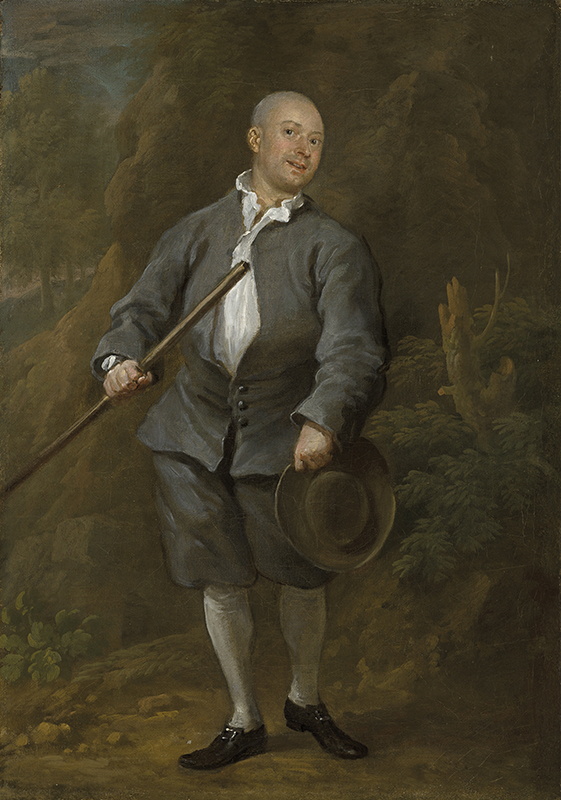
The Pugilist: A Quarterstaff Player
attributed to William Hogarth
n.d.
This painting has been identified as a portrait of prize-fighter John Broughton. Elisabeth Einberg has pointed out that the sitter’s portrait compares more closely with contemporary likenesses of Figg (see the mezzotint by John Faber after John Ellys (British Museum and National Portrait Gallery, London), and a drawing by Jonathan Richardson the Elder (Oxford, Ashmolean Museum). However, the physiognomy seems to correspond more closely to portraits of Broughton than to portraits of Figg (see the Ashmolean portrait here and the British Museum print here). Whereas portraits of Figg tend to show a leaner man with prominent cheekbones and a frowning brow, those of Broughton tend to show a bulkier man with a rounded face and characteristic folds at the corners of his mouth. However, the portraits may simply reflect the age and fitness of the sitter. More telling perhaps (in which case this may indeed be a portrait of Figg) is the weapon he holds. Figg practised combats with weapons ("Trials of Skill") while Broughton practised combats with fists ("Trials of Manhood").
J.B. Nichols and G. Steevens identify the subject of this painting as Broughton:
"Small whole-length of Broughton," in the collection of the Marquis Camden. This picture is 16½ inches high and 11½ inches wide. Broughton is represented bald-headed, and has a smiling countenance. In his right hand he holds a quarter-staff, and in his left a round hat. The figure is about 14 inches high. A wood is seen in the distance. This Portrait has not been engraved.—The Genuine Works of William Hogarth III (London: 1817), p. 175.
The image displayed on this page is courtesy of Wikimedia Commons. The official position taken by the Wikimedia Foundation is that "faithful reproductions of two-dimensional public domain works of art are public domain."